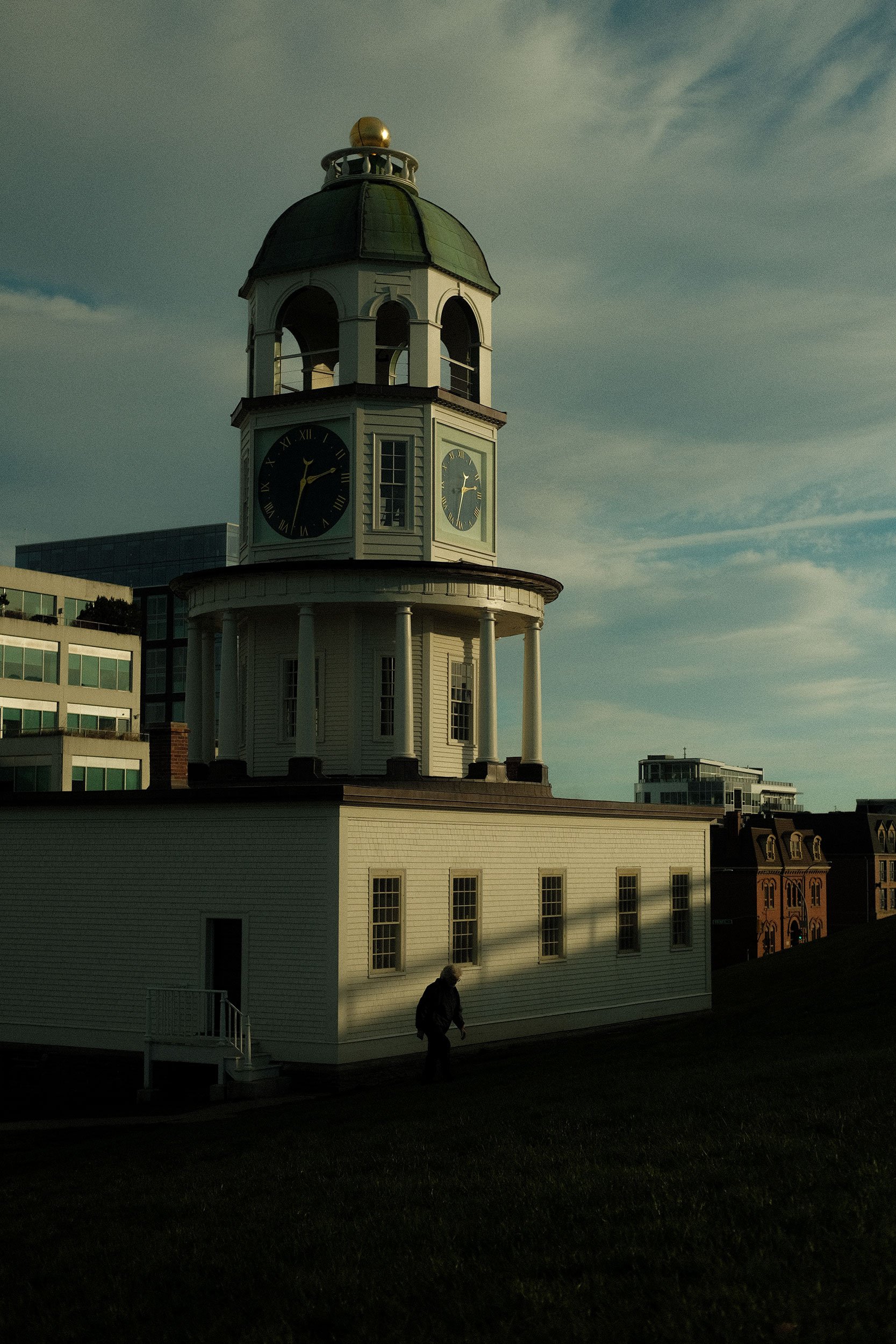Kodak Portra 400 Fujifilm Simulation Recipe: HFX Street
As part of my ongoing street photography project, I walked around downtown Halifax, capturing photos using a different simulation. I was using the Fujifilm X-E4 with the 35mm f/2, and the recipe I chose was the Kodak Portra 400. Also, I have been shooting both JPEG and RAW in the instance that I wanted to process my RAWS differently, but for the times I have shot both, I never bothered much with the RAWs. When looking at a JPEG with a recipe baked in directly beside a RAW with zero processing, it’s easy to make a choice. After all, I am looking at the final results of the photo with the JPEG and the beginning of a RAW. As with JPEG processing on these photos, it is kept to a minimum with only minor adjustments to highlights and shadows.
What is Kodak Portra 400?
Kodak Portra was introduced in 1998, and with its favourable results on skin tones, it was frequently used in portrait and wedding photography. Over the years, the film’s use has evolved and is now used in various applications, including travel, outdoor, and nature photography. Kodak Portra is a daylight-balanced professional colour negative and was available as film in three different speeds, 400, 160, and 800. There is a significant shift to the white balance in this recipe, adding +3 to the red and -5 to the blue. This gives warmth and vibrance to the photos.
Where in Halifax Were These Taken?
Downtown Halifax is approximately 4 km2, and the area is seeing significant development and redevelopment. During this day, I walked around Queen’s Marque and the Muir Halifax Hotel on Lower Water Street as I felt there would be a good concentration of people around the area. I also photographed around Barrington and Prince, Arthur’s Urban Market on Hollis, the Neptune Theatre on Argyle Street, Brunswick, and the Town Clock on Citadel Hil.
What is the Kodak Portra 400 Recipe?
The Kodak Portra 400 recipe, as posted in Fuji X Weekly, is as follows:
Classic Chrome
Dynamic Range: DR-Auto
Highlight: -1
Shadow: -2
Colour: +2
Noise Reduction: -4
Sharpening: -2
Clarity: +2
Grain Effect: Strong, Small
Colour Chrome Effect: Strong
Colour Chrome Effect Blue: Weak
White Balance: Daylight, +3 Red & -5 Blue
ISO: Auto, up to ISO 6400
Exposure Compensation: +1/3 to +1 (typically)
Summary
I like the Kodak Portra 400. For the film simulations I’ve used so far, there isn’t one that stands out as one I would never use again. I’m sure I will eventually find a few that will not necessarily work for the style I am going for. Still, the Kodak Portra 400 simulation is one I will continue to use and have saved as one of the camera’s presets moving forward.



